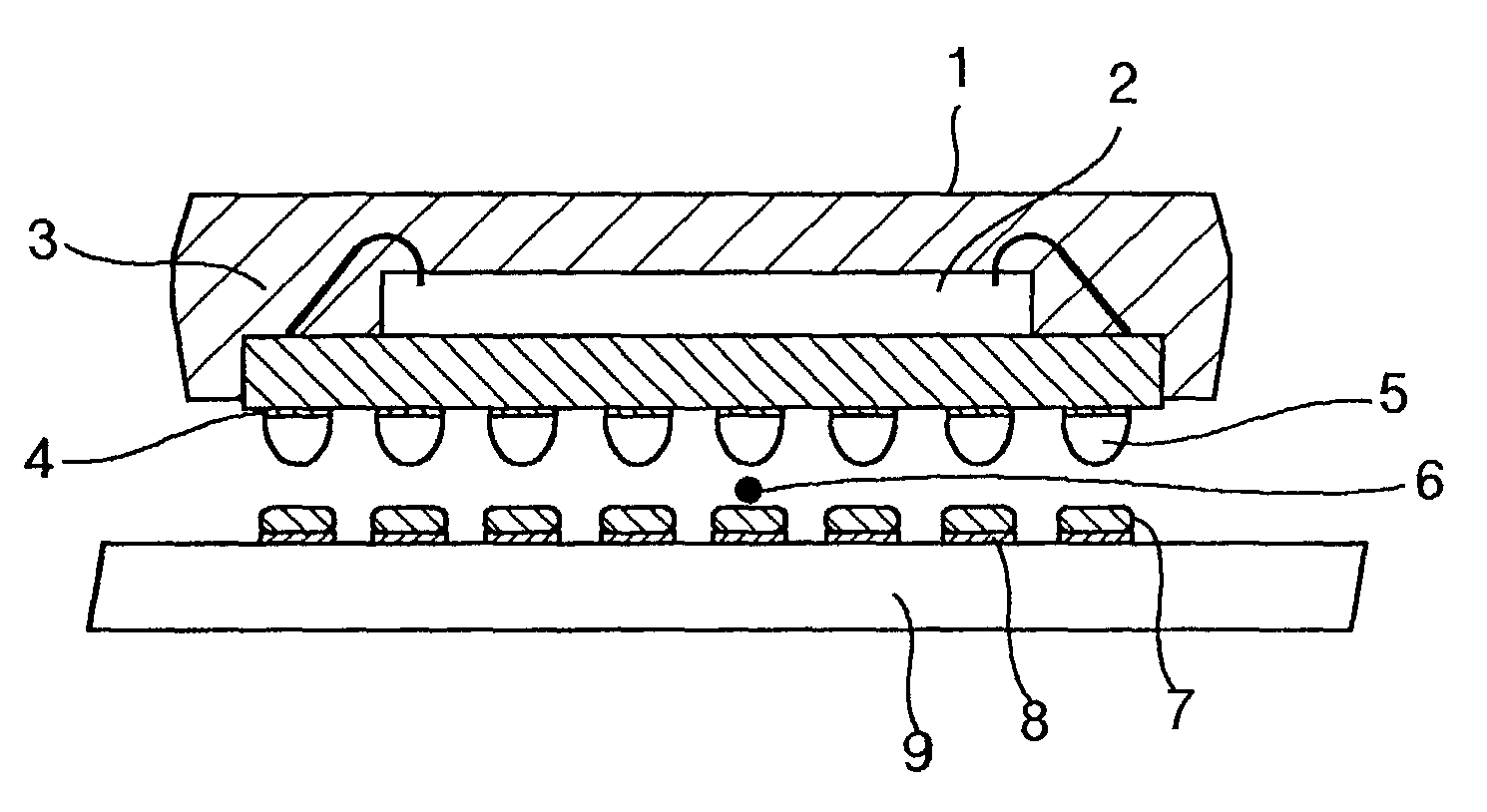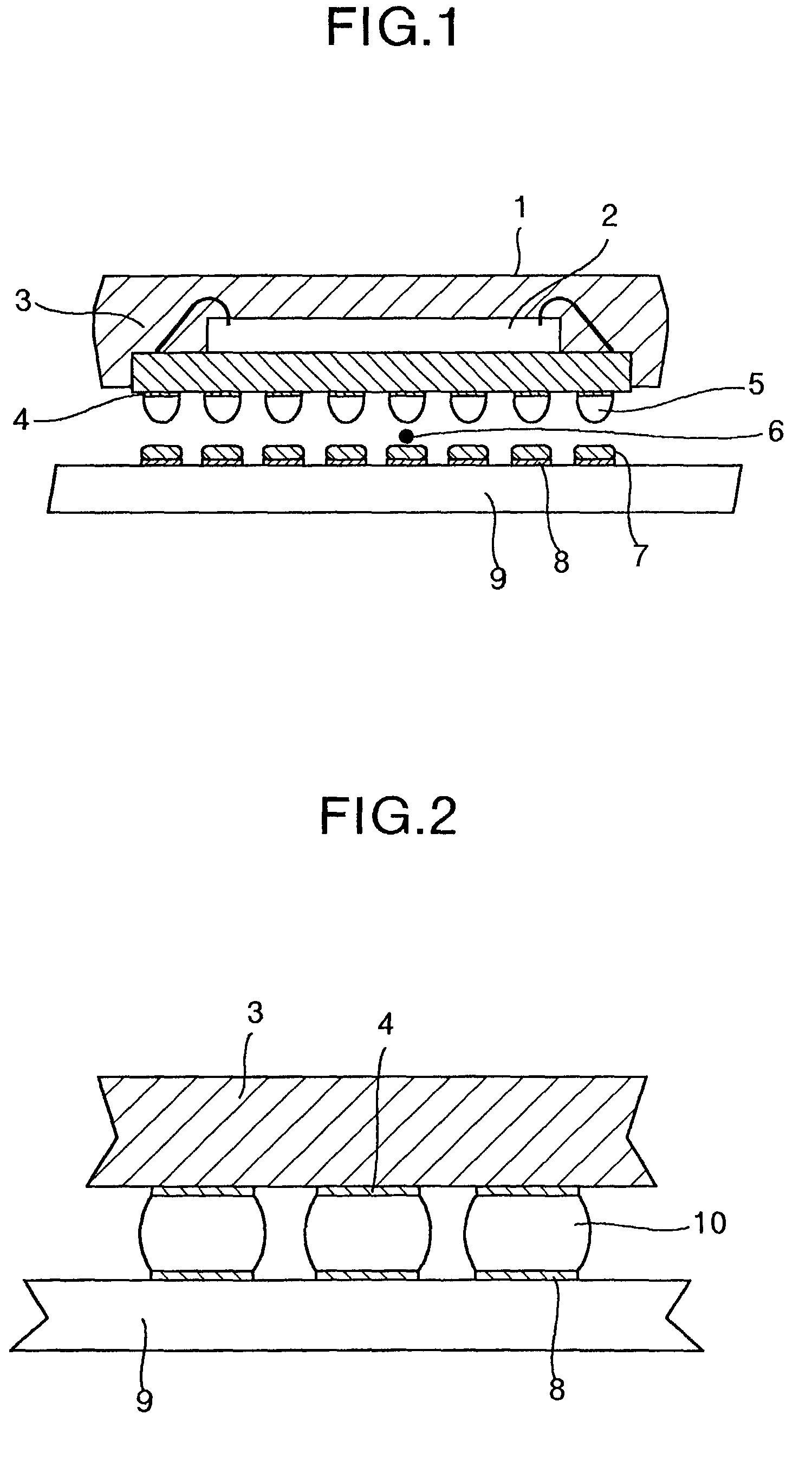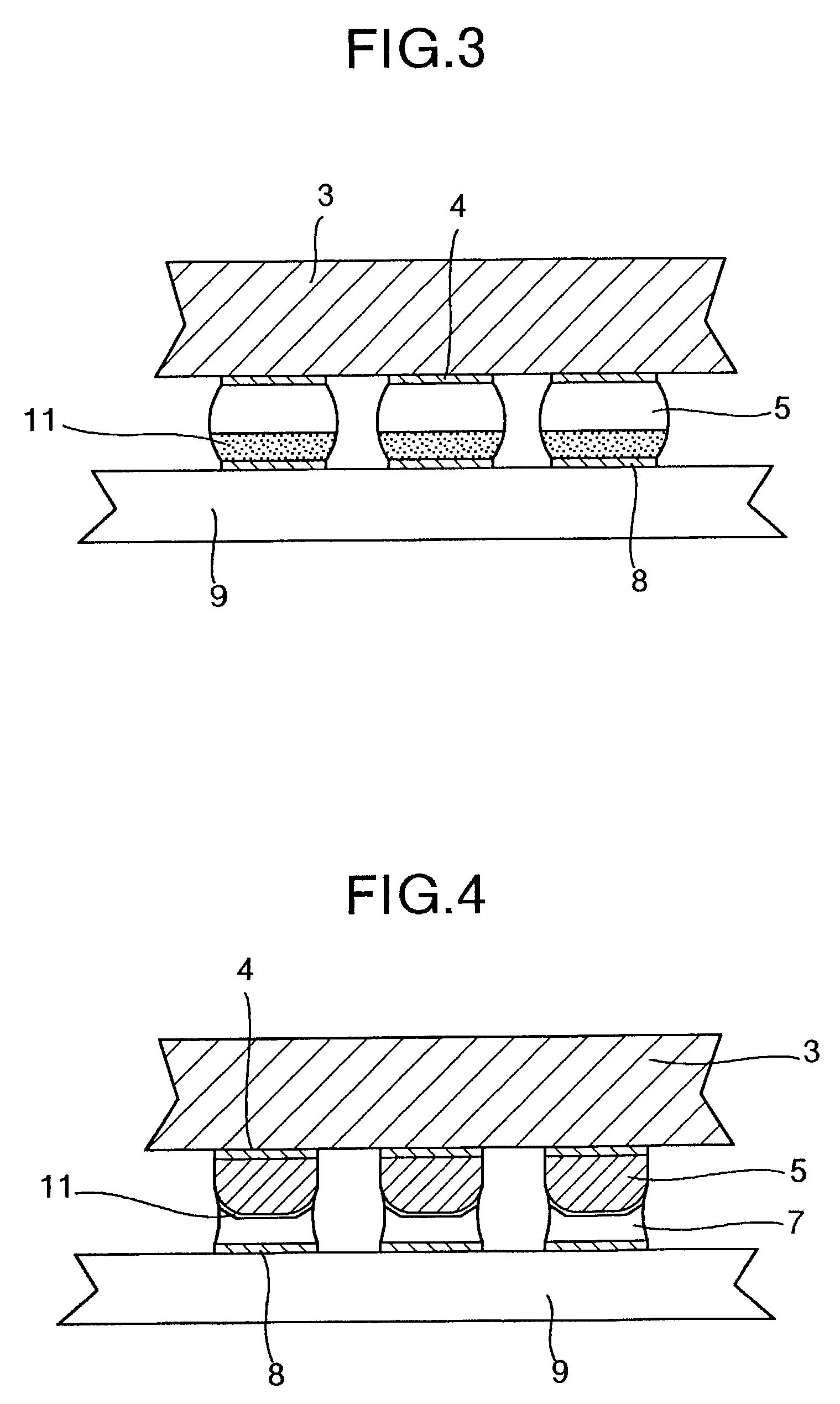Semiconductor device having solder bumps reliably reflow solderable
a technology of semiconductor devices and bumps, which is applied in the direction of sustainable manufacturing/processing, final product manufacturing, transportation and packaging, etc., can solve the problems of heat resistance properties of the substrate and other electric parts (such as electrolytic capacitors and etc.) mounted on the substrate, and achieve the effect of high reliability
- Summary
- Abstract
- Description
- Claims
- Application Information
AI Technical Summary
Benefits of technology
Problems solved by technology
Method used
Image
Examples
Embodiment Construction
[0030]The preferred embodiments of the invention are described below while referring to the drawings.
[0031]FIG. 1 a schematic view of an example of BGA used in the embodiment of the invention. The dimensions of a package used therein is 30 mm×30 mm, and a chip 2 located in the package has dimensions of 10 mm×10 mm. Each of solder bumps 5 has a diameter of 0.76 mm. Each of pads 4 formed on a BGA substrate 3 has a diameter of 0.6 mm, which pads are made of copper metallized with the plating layer of Ni (of a thickness of 10 to 25 μm) / Au (of a thickness of 0.5 to 1.2 μm). The mounting substrate 9 is FR-4 substrate having a thickness of 1 mm. Each of pads 8 provided on the substrate 9 has a diameter of 0.6 mm, each of the pads 8 being formed of copper metallized with the layer of Ni (of a thickness of 2 μm) / Au (of a thickness of 0.03 μm). The mounting thereof is performed by the steps of: transferring on the pads 8 a solder paste 7 through a printing mask which solder paste contains sol...
PUM
| Property | Measurement | Unit |
|---|---|---|
| Fraction | aaaaa | aaaaa |
| Fraction | aaaaa | aaaaa |
| Fraction | aaaaa | aaaaa |
Abstract
Description
Claims
Application Information
 Login to View More
Login to View More - R&D
- Intellectual Property
- Life Sciences
- Materials
- Tech Scout
- Unparalleled Data Quality
- Higher Quality Content
- 60% Fewer Hallucinations
Browse by: Latest US Patents, China's latest patents, Technical Efficacy Thesaurus, Application Domain, Technology Topic, Popular Technical Reports.
© 2025 PatSnap. All rights reserved.Legal|Privacy policy|Modern Slavery Act Transparency Statement|Sitemap|About US| Contact US: help@patsnap.com



